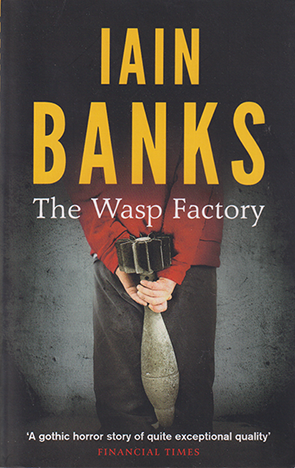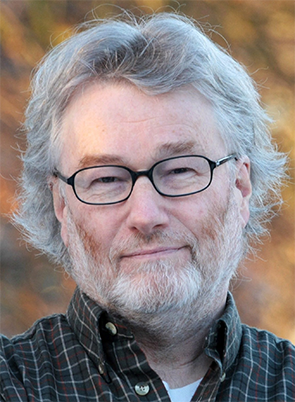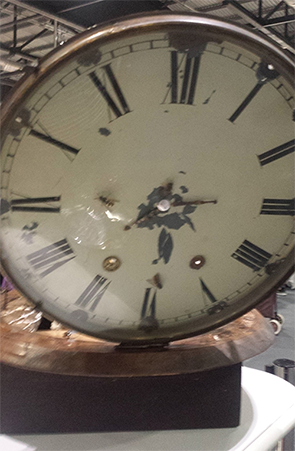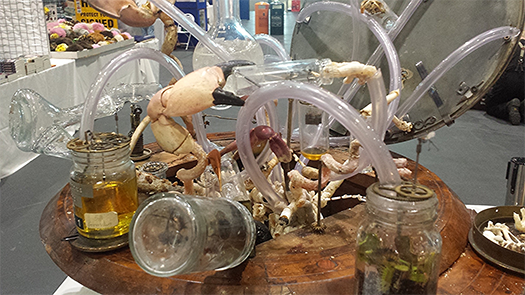
ISBN:9780349139180

- Category:Bildungsroman
- Date Read:21/11/2024
- Year Published:1984
- Pages:244

The Wasp Factory is one of those rare books that sent me looking for other reviews before I started to write my own. It was not that I was wondering what others thought of the novel. I already imagined that a novel this violent, this twisted, but also funny, would garner a range of responses from delight to disgust. And that’s what I discovered. The marketing campaign for the novel exploited early criticisms the book received. The publisher embraced its polarising effect by including excerpts within its covers written both in praise and condemnation for readers to pore over in bookstores. Released in 1984, The Wasp Factory was Iain Banks’ first published novel, after he spent years failing to get his science fiction manuscripts accepted by publishers. So, The Wasp Factory was a novel written to get attention. It got attention.
The book is nominally about sixteen-year-old Frank Cauldhame, living alone with his father on a small island, barely separated from the Scottish coast and connected by a small bridge to the mainland. Apart from his friend, Jamie the Dwarf, Frank sees no one but his father. Obsessed with the boundaries of their property which represent himself, isolated from society, he is shaped by a personal history he barely understands. He maintains weird totemic poles with the heads of sacrificed animals set atop them as a kind of mystic perimeter, he performs strange auguries to intuit the future, and he viciously kills animals in a bizarre defence of the island from the outer world. When Frank and his father receive word that Eric, Frank’s older brother, has escaped from the mental institution and is likely to return home, the news casts a pall over Frank and the entire novel. Before he was institutionalised, Eric set dogs alight and tried to make children eat maggots. Something went wrong in Eric’s life. What we learn of him makes him sound psychotic. But then Frank, our first-person narrator, seems no less so. Apart from his destruction of a rabbit warren with gun, catapult, bombs and an improvised flame thrower, Frank also admits to us that he murdered three children when he was himself a child, and tells us, “It was just a stage I was going through.” Frankly (no pun intended) I spent a good deal of the novel wondering whether this was going to be another Fight Club (published twelve years after this novel, admittedly) in which the protagonist and the antagonist are the same person. (As an aside, I imagine this could be the hypothesis of an academic paper. Frank teasingly states, “a lot of kids started to think that I was Eric” and “I decided I must be lots of different people inside my brain.”) The novel is overshadowed by mysteries from the past. It is a feeling bolstered by Frank’s slow release of information about his own secrets; about how he killed each of the three children, including his younger brother, Paul, and about the terrible moment that made of his brother, Eric, who he is. There is also the looming presence of his father’s study. Always closed and locked from Frank’s prying eyes, the study holds another secret we understand will eventually be revealed, and given the tone of the novel, we anticipate it is going to be something shocking.
This is what sent me looking at other reviews. How much of the plot, I wondered, was already publicly available? How much could I give away? The answer to the first question was, quite a lot. In fact, the central mystery of the entire novel is freely available to read on certain webpages. Even so, I decided that this is a novel best read with its key mysteries protected, and so this review will contain no real spoilers. Already, I am encouraging you to check this novel out. It is quite extraordinary.
Of course, for attentive readers, there are clues throughout about the relationship between Frank and his father, as well as Eric’s past. We know there are factors which have triggered Frank and Eric’s violence. Yet, despite his extreme and disturbing violence, Frank is a fascinating character who garners some sympathy. One reason for this, I think, is that his story is so diverting: we are inside his head and privy to how Frank rationalises his world and decisions. It is compelling. As much as The Wasp Factory is about anything, it is about the struggle between our irrational and rational selves. Frank understands that he is racist, for instance, but on an intellectual level he understands the absurdity of this position, also. Frank’s rational self understands the conventions and fictions which sustain him – his rituals, his killings – though he is compelled by his feelings to maintain them. In fact, he is wise enough to understand the difference between the violence he wreaks upon the island and the institutional violence of government:
At least I admit that it’s all to boost my ego, restore my pride and give me pleasure, not to save the country or uphold justice or honour the dead.
It is a psychological delineation the novel requires of the reader, as well. All deaths in this novel are disturbing, but equally, all deaths in this novel are entertaining. A scene in which Frank catapults numerous animals, sending them to their deaths, is reminiscent of Monty Python. As I considered the violence of the novel, I was also reminded of the scene in Pulp Fiction where Jules accidentally shoots Marvin in the head. It is a shocking, visceral death, but I personally know of no-one who, seeing the scene for the first time, didn’t laugh. I did. It just burst out. There is something uncomfortably similar happening in The Wasp Factory, too. Take, for instance, the death of uncle Athelward Trapley. Uncle Athelward decides to kill himself, but his suicide is so inept it would be worthy of a scene from a Horrible History’s ‘Stupid Deaths’ segment, or a mention in the Darwin Awards. Having turned on the gas Athelward sits, waiting to die. But as he waits, he lights a cigarette to pass the time. His attempt to douse the flames engulfing his body sends him outside to a forty-gallon oil drum full of rain water, into which he dives, headfirst. The fire is extinguished, but Uncle Athelward dies, nevertheless, because he cannot find purchase to lever himself out of the drum. He drowns.
Or there is the death of Uncle Leviticus, his father’s brother, a hopelessly stupid man who immigrates to South Africa because he is unhappy with the political left in Scotland. In South Africa he finds a nation to his liking, except for all the black people around. It is ironically satisfying then, that since a black man is pushed from a high window to his death, that he should at least land on Uncle Leviticus and take him out, too.
We feel a sense of justice, at least, in the death of Uncle Leviticus: the kind of death we might expect from a skit show. But even the death of the three children – all of them relatives – by means of Frank’s machinations, are cartoonish. Though their deaths should elicit shock and stir our empathy, we may be discomforted by the fact that we also find their deaths entertaining. Yet the death of Uncle Harmsworth, another inept suicide, draws our attention to the underlying seriousness of the novel. Frank understands that Harmsworth’s daughter, Esmerelda, one of Frank’s three victims, has likely contributed to his uncle’s motive for suicide. It is instances of this kind of awareness that raises the novel above the level of teenage farce.
The Wasp Factory is a kind of bildungsroman, but it also draws from the Gothic tradition. Except for occasional drinking binges with Jamie, Frank rarely leaves the island. He lives in exile; his own existence is uncertain. His birth has never been officially recorded, so he does not officially exist. The island and his father’s house exhibit elements of Gothic horror: the remote ‘castle’ – their house – in which the protagonist lives isolated from society, surrounded by mysteries and the threat of death or violence. Frank’s mind is so bizarre that it contributes to this atmosphere. Having never attended school or church, he exists in a fantasy world more befitting a younger character. He is steeped in his own lore and has developed a form of his own religion, it seems, in which he seeks guidance from the titular wasp factory, another device with which he tortures insects to augur guidance. Frank’s activities are consumed by strange rituals, many of which should be repelling. But often, as in the case of the wasp factory, the means and mechanisms by which Frank intersects with reality is so curious and fascinating that we feel compelled to follow the tenets of Frank’s thinking and his world.
Frank’s world is closed: insular and private. But as readers we sense a wider world mirrored in Frank’s parochialism, in the situation with his father and the island. There is a sense of Britain in the 1980s represented in microcosm. Banks felt compelled to explain in his preface to the novel that:
… it [the novel] was supposed to be a pro-feminist, anti-militaristic work, satirising religion and commenting on the way we’re shaped by our surroundings and upbringing and the usually skewed information we’re presented with by those in power.
Banks was one of those rare authors happy enough to say what he thought his book was about, or meant (although he also liked to joke that it was about 250 pages). There is a lot to unpack here in his statement, and for those who have not read the novel, claims of pro-feminism or anti-militarism may be a stretch. It would seem there is barely a female character to be seen, and while fighter jets may pass over the island in one scene, there is no direct mention of the Falklands War, fought less than two years before the publication of the novel. But the island can still feel like Britain, parochial, paranoid, and searching for identity, from a certain perspective. The idea of hyper-militarism is also suggested by Frank’s paranoid sorties against the animals on the island, and the question of masculinity is central to the whole story. The two ideas are connected. Frank despises women, a way of thinking taught by his father. He believes women are weak and emotional:
Women, I know from watching hundreds – maybe thousands – of films and television programmes, cannot withstand really major things happening to them; they get raped, or their loved ones dies, and they go to pieces, go crazy and commit suicide, or just pine away until they die.
The attentive reader will note that the only two suicides in the novel have been men. And that the only person who seems to have gone crazy within the official determination of the law is Frank’s brother, Eric. Frank accommodates this discrepancy by speculating upon the nature of Eric’s personality: whether it was too much feminine weakness in his brother’s character which caused his breakdown: his character having “just a little too much of the woman in it.” It is telling, in Frank’s account, that the catalyst for Eric’s eventual breakdown is the rejection by a woman.
Frank’s life and rituals, it appears, have inured him against this weakness. In Frank Banks is teasing at how masculine identity is constructed and the effects of that within society, even upon the wider geopolitical stage: “Both sexes,” Frank asserts, “can do one thing specially well; women can give birth and men can kill … We strike out, push through, thrust and take.” Frank’s attitudes are predicated upon a belief in biological determinism, which would posit that the state of the world is indeed natural. Yet Frank is not fully cognisant of his own doctrine. When he muses upon the effects of evolution on domesticated farm animals, he reasons that their docile natures are not natural, but the product of centuries of selective breeding, moulding “them from the wild, smart survivors that were their ancestors so that they would become docile, frightened, stupid …” He also muses with but rejects the idea that the same process has happened to women. Of the nature of men – that “men can kill” – he does not deign to consider.
This is about as much as can be said in a review which promises no real spoilers. Frank is obsessed by his own masculinity, having suffered a terrible accident when younger. His rituals seem like a compulsive parody of aspects of populist mainstream religious thinking. And he lives isolated in a world and a reality created by his father. Though he has watched television and read books, his understanding of that world and the fundamental aspects of his own life are limited.
The Wasp Factory is one of the most accomplished first novels I’ve read. Its characterisation, plotting, pacing and ideas are exceptional, and its tone is spot on. The penultimate chapter is gripping, though somewhat anti-climactic in its outcome. However, I found the final chapter to be a weak point in what is otherwise a brilliant novel. I was reminded of Hitchcock’s movie, Psycho. In the final scenes of that movie Norman Bates sits isolated, having been revealed to be a murderous personality spilt with his own mother. These final moments are unsettling, but it is exposition, nevertheless. The movie is being wrapped up and explained to us. I thought this worked fairly well in the film because it meshed with what we have come to learn about Bates’ character. But the same thing works less so in Banks’ final pages. All the secrets, having been revealed, are explained to us. The exposition is not as well executed as the rest of the novel. It feels rushed; the story truncated. It also reveals a level of personal insight gained by Frank when he uncovers his family’s secrets which is not apparent in any other aspect of the story. It’s the likely weakness of a story predicated upon secrets. Once they are revealed the narrative drive is spent and the story must end quickly. That Banks did not execute the ending as well as he might may be attributed to experience. But this is, nevertheless, an extraordinary novel.

‘The Wasp Factory’ by Tessa Farmer (2014)



No one has commented yet. Be the first!